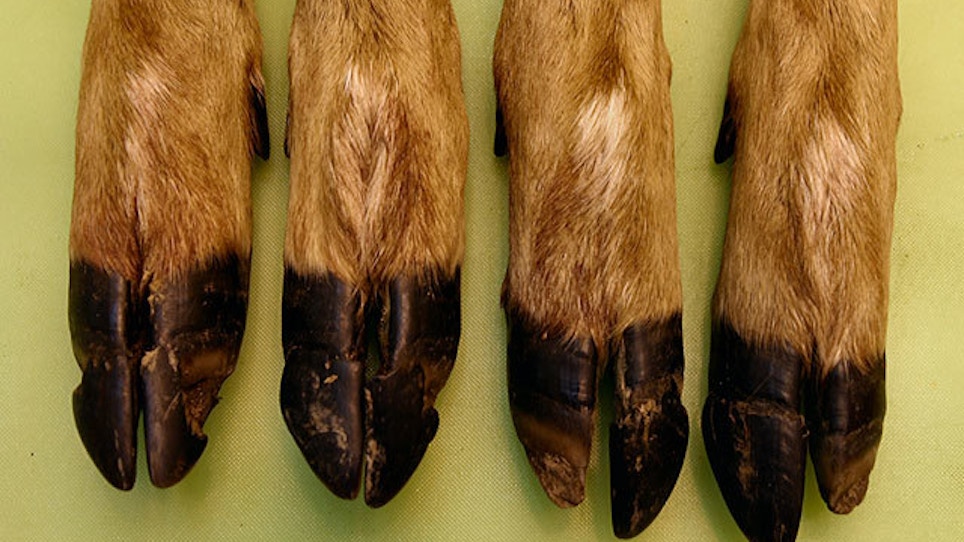When whitetails in much of the United States contract a bluetongue or epizootic hemorrhagic disease (EHD), they usually have about two weeks to live. Within a week, infected deer lose their appetite and their fear of humans, develop mouth ulcers and high fevers, salivate and foam constantly around their nose and mouth, and experience a rapid pulse and respiration rate. They also suffer swelling to their face, neck, eyelids and tongue. Internally, they hemorrhage from their heart, lungs, liver, kidneys, spleen and intestines. As their blood supply drops, so does their oxygen supply, which causes their tongues to turn blue, hence the name, “bluetongue.”
Once these signs are visible, a deer dies within eight to 36 hours. Rising fever and internal bleeding make stricken deer feel hot and dehydrated, causing them to seek water to drink and cool off. Therefore, a reliable sign of HD is dead deer found in or near ponds, creeks and sloughs.
Deer that survive the disease develop antibodies for immunity during future outbreaks, but they’re often left lame. Lesions on their legs and hoofs often cause hoofs to chip, crack or slough off.
Because bluetongue and EHD are difficult to tell apart, they’re typically lumped together as hemorrhagic diseases, or “HD.” Here are some facts to remember about HD:
* These diseases are not passed deer to deer. They spread through bites by midges, a small fly.
* These diseases do not affect humans, and there is no evidence humans can catch HD viruses from midge bites or by eating venison. However, secondary infections could taint the meat. To be safe, do not eat venison from visibly sick deer.
* Contact your state wildlife agency if you find dead deer near water sources from mid-July through autumn’s first killing frost.
* EHD was first identified in 1955 in New Jersey and Michigan, but historical records suggest it was occurring as long ago as the 1890s.
* Ohio’s first confirmed EHD deaths occurred in 2002, but conditions in the 1980s suggest HD caused some suspicious deer deaths.
* Die-offs caused by HD usually don’t exceed 25 percent of the herd, which allows the herd to rebuild fairly quickly.






